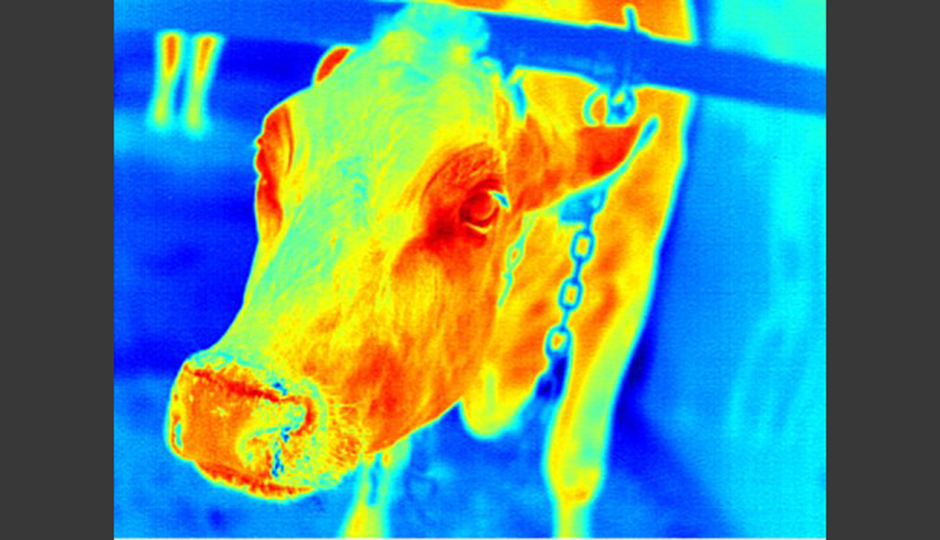Infrared vision has many uses, some of which can be quite surprising! Not only does it allow soldiers to locate enemies at night, it can also help farmers to predict when their cows are going to calf. How does it do this? Infrared thermography records the heat emitted by humans and animals, making it possible for an infrared camera to “see” in the dark and to detect the drop in body temperature that signals that calving is imminent.
The scientists were able to devise a system requiring no contact with the cow, minimizing stress to the animal.
It is important to understand that calving is a critical time for the cow and her calf. To ensure a successful birth, the farmer or a veterinarian needs to be present. But what if technology could be used to monitor the animal’s condition instead of the farmer, who often has to wait around for days and nights at a time? The team of Xavier Maldague, a professor in the Department of Electrical and Computer Engineering at Université Laval, decided to set up an infrared camera in a stable in Saint-Anselme to measure the variations in body temperature of gestating cows. A straightforward task, thought the team, until they encountered some of the realities of the farming world: mice nibbling on the wires, milking robots bumping into the cameras, cows licking the lenses, dust everywhere... Furthermore, the researchers realized that the cows’ coats were skewing the body temperature readings.
Their solution was to position the camera carefully, and to use image processing to analyse only the hairless area around the eyes. The scientists were thus able to devise a system requiring no contact with the cow, minimizing stress to the animal. The camera records temperature images, which are then calibrated by a program developed for use in the agriculture industry. This concept could soon be commercialized for use on the farm!




